Elton John at Caribou Ranch and the Piano Used to Write "Philadelphia Freedom"
Jan 13,2015 | 12:00 EST By Kimberly Blomquist, Leslie Hindman Auctioneers

Caribou Ranch was a recording studio built in the Rocky Mountains by Grammy award-winning musician and producer James William Guercio. The ranch hosted over 150 music legends, including Elton John, during the 70s and 80s. John worked on three albums at Caribou Ranch: Caribou, Rock of the Westies and Captain Fantastic and the Brown Dirt Cowboy. His 1974 Caribou album was named after the ranch. The mahogany Steinway & Sons grand piano used while recording “Don’t Let the Sun Go Down on Me,” among other tracks from the album, is now available at auction. Elton John at Caribou Ranch, where he recorded three albums, with a porcelain dinner service available at auction by Leslie Hindman Auctioneers on January 24. The dinner service includes 189 items total, including the pitcher, plate and bowl pictured here. Both the indoor and outdoor furniture ...Read More
Explore Jackie O’s Love of Couture Through Rare Photos and Personal Correspondence with Designers
Jan 12,2015 | 17:00 EST By Rico Baca, Palm Beach Modern Auctions
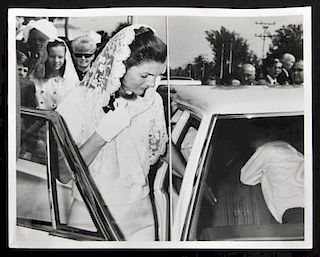
With her impeccable eye for design and effortless ability to set global fashion trends, Jacqueline Kennedy Onassis was the 20th century’s most influential style icon. While the entire world was able to admire her wardrobe choices via the media, very few were invited behind the scenes where she collaborated one-on-one with her favorite designers. That very private aspect of the late first lady’s life is the focus of a January 17 Modern Design, Art & Fashion Accessories auction to be held at Palm Beach Modern Auction’s exhibition center in West Palm Beach, Florida. The auction’s centerpiece is an archive of personal notes from Jacqueline Onassis to Bill Hamilton, longtime design director for Carolina Herrera. “Bill dressed Jackie Onassis almost exclusively from the mid 1980s until her passing in 1994. The notes in his archive show that their ...Read More
How to Approach Southern Paintings: 4 Tips for Collectors
Jan 05,2015 | 14:00 EST By Lauren Brunk, Brunk Auctions
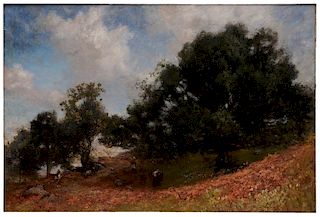
Have you ever heard the conventional wisdom: “buy on the whisper, sell on the news?” People have been whispering about Southern paintings for years and it will not be long before those whispers can be heard even north of Virginia. But you are not too late to buy before Southern paintings become big news. The sea of paintings and artists with Southern leanings is deep, wide, and complex. So how do you wade in? These 4 tips will help you get started. Anna Catherine Wiley, Gathering in the Woods, Sold September 2012, $15,340 1. Find your connection Look at a region that is of interest to you. If this is a purchase that you will live with, it will give you a great deal more pleasure if the imagery is evocative for you. If your grandmother is from New Orleans, you might consider the work of Will Henry Stevens, who painted both the coast of L...Read More
Shaker Boxes
Jan 05,2015 | 13:50 EST By Diane C. Wachs, Cowans Auctions
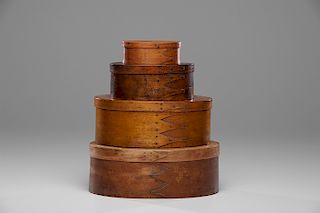
Shaker oval lapped boxes were made throughout the United States in the 19th century, but two styles were uniquely to Shaker tradition. "The first is made with a lap where the edge is cut like a sawtooth with the length of the teeth varying from about one fourth of an inch to an inch and a half. This sawtooth lap is uncommon and found almost exclusively on boxes that were made at Alfred, Maine," wrote Charles R. Muller in The Shaker Way. "The second peculiarly Shaker design is the Gothic lap wherein the edge of the lap is cut in a series of Gothic arches making from two to six fingers," Muller continued. "The Shakers discovered that a straight seam held with a series of nails did not allow for shrinkage. Therefore, the edge of the lap had a tendency to buckle between the nails or split at the nails. The use of fingers prevented splits an...Read More
Art Experiences at Auction to Aid Doctors Without Borders
Nov 25,2014 | 15:00 EST By Diana Arand, Bidsquare
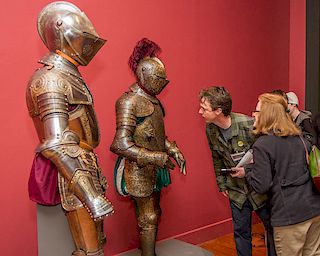
Bidsquare, the online bidding platform for over 35 leading auction houses, announces Bidsquare Cares: a holiday benefit auction of art experiences to aid the Ebola workers of Doctors Without Borders. Bidding opens at bidsquare.com on Black Friday, November 28th at 12:00PM EST, and closes on Monday, December 8th at 12:00PM EST. Up for grabs are 35 one-of-a-kind art and city experiences from the leading auction houses that created Bidsquare: Brunk Auctions, Cowan’s Auctions, Leslie Hindman Auctioneers, Pook & Pook, Inc., Rago and Skinner, Inc. Tour highlights include a walk and talk with David Rago at the Metropolitan Museum of Art; a National Public Radio behind the scenes tour in Cincinnati; and a helicopter ride over Chicago. Among the other gifts to give to yourself or others: a tabletop bronze sculpture by Klaus Ihlenfeld valued at ...Read More
Neolithic Jade
Nov 07,2014 | 11:05 EST By Andrea Zeifman, A. H. Wilkens Auctions and Appraisals

Jade has been an essential material of art and worship in China since its birth as a culture over 6000 years ago. The myriad of colours and translucencies formed the belief that the natural beauty of the stone held the essence of universe’s qi and thus a quintessential part of early culture. Historical context notes that the birth of jade culture in China corresponds with the beginnings of metallurgy and the invention of written language in the Ancient Near East (Tigris Euphrates). In China, jade was being carved in the areas along the Yellow and Yangzi Rivers, considered to be the birthplace of Chinese civilization including the Neolithic period Yangshao, Hongshan and Liangzhu cultures. Carved jade was an essential part of ritual, as represented in funerary ceremonies. Small jade objects or pendants were kept for personal prayer and larger...Read More
Kentucky sugar chests
Oct 30,2014 | 11:00 EDT By Diane Waches, Cowan’s Auctions
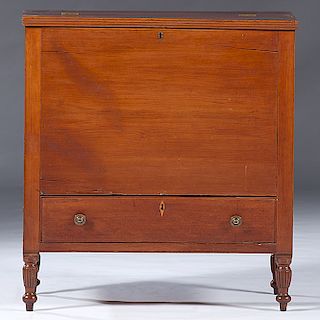
The sugar chest has been called the quintessential piece of Kentucky furniture. More than just decorative, sugar chests were functional. They needed to be, since sugar was once a scarce and expensive commodity. Today, when we think of sugar the granulated form comes to mind, but sugar available from the late-18th to the mid-19th century came in hard, cone-shaped loaves. The loaves ranges in size; with those purchased for family use weighing between eleven and thirteen pounds. The manufacturing process entailed squeezing liquid from the sugar cane plant, with the remaining sucrose compressed into molds. The end product was the solid sugar sold to consumers. Sugar nippers were used to break off pieces from the cone, and then crushed those pieces into granules. Sugar chests became the preferred way to store and secure the product. The decorati...Read More
Understanding the Value of Glass and Pottery Bowls
Oct 24,2014 | 16:36 EDT By David Rago, Rago Arts & Auction Center

My previous blog post: “Why Do Vases Sell for More Money than Bowls” may well have left you with the impression that all vases are good and all bowls are bad (at least when it comes to monetary value). As with nearly everything in life of course there are exceptions to the rule that vases are worth more than bowls. Lets take a closer look at the nuances that cause some pottery or glass objects to be more valuable than others. Bowls are usually wider than they are tall and broader at the top than at the bottom. If the opposite were true wed call the object a vase. But some objects don’t follow the traditional bowl shape, and these may be more valuable. Bowls that do have the typical form, but stand out thanks to decorations by a master designer, may also be quite valuable. A closed bowl describes a form that is wider than tall but turns inwa...Read More
Hooked: Collecting Carpets, Quilts, Rugs, and Other Textiles
Oct 10,2014 | 15:35 EDT By Ron Pook, Founder, Pook & Pook, Inc.
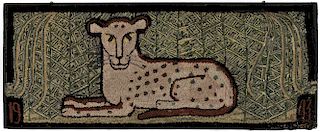
I am an average guy who doesn’t have a vintage Porsche or a fabulous wine cellar, but I do have some great oriental rugs on the floor and some folk art hooked rugs on the wall. I think textiles are great objects to enjoy and you don’t have to worry about lead free gasoline or “cork taint.” Textiles span centuries and continents; the beginnings of the field go back centuries, to Peruvian pre-Columbian textiles from 600 B.C. Sophisticated collectors and museums seek out rare Egyptian and Chinese fragments of linen made from the flax plant. However, archaic pieces of this genre consist mainly of fragments or pieces of Persian carpets. Pieces can range from $100-200 for a small fragment from the Chancay Culture of Peru to many millions for early 17th century Kirman carpets. Textiles that appeal to most modern collectors include quilts, coverlet...Read More
Collecting Political Campaign Flags
Oct 06,2014 | 14:00 EDT By C. Wesley Cowan, President and Principal Auctioneer
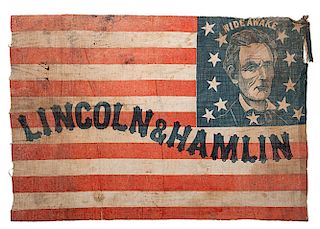
Another important election season is upon us. Political campaign literature and television commercials are already besieging us. Hundreds of millions of dollars will be spent on these campaigns nationwide, with each ad vying for our attention – and our vote. In this electronic age, few of us realize just how much electioneering has changed over the history of the republic. Imagine flying a flag with a portrait of your favorite presidential candidate; my how things have changed! In the early years of our country, there was precious little of the sorts of activity that we associate with the heated political campaigns of today. A scattered population with no real means of mass communication meant that office seekers had little way to communicate to the general voter. This was particularly difficult in areas west of the Allegheny and Appalachia...Read More
- Quilts as a 2025 Design Trend: A Celebration of American Heritage and Craftsmanship
- A Celebration of Sports History and Collectibles
- Antiques and the Arts Weekly Q&A: Allis Ghim
- The Thrill of Sports Memorabilia Auctions: A Collector’s Paradise
- Demystifying Coin Condition: A Guide to the Sheldon Grading Scale
- Snoopy & Friends: A “Peanuts” Auction at Revere
- Colorful Chinese Monochromes at Millea Bros
- 12 Holiday Gifts for the “Impossible to Buy For” on Bidsquare
- Alluring Art Objects and Accessories from the Estate of Chara Schreyer
- Kimball Sterling's One-Owner Outsider and Folk Art Collection Showcases Masters of the Unconventional



 EUR
EUR CAD
CAD AUD
AUD GBP
GBP MXN
MXN HKD
HKD CNY
CNY MYR
MYR SEK
SEK SGD
SGD CHF
CHF THB
THB




